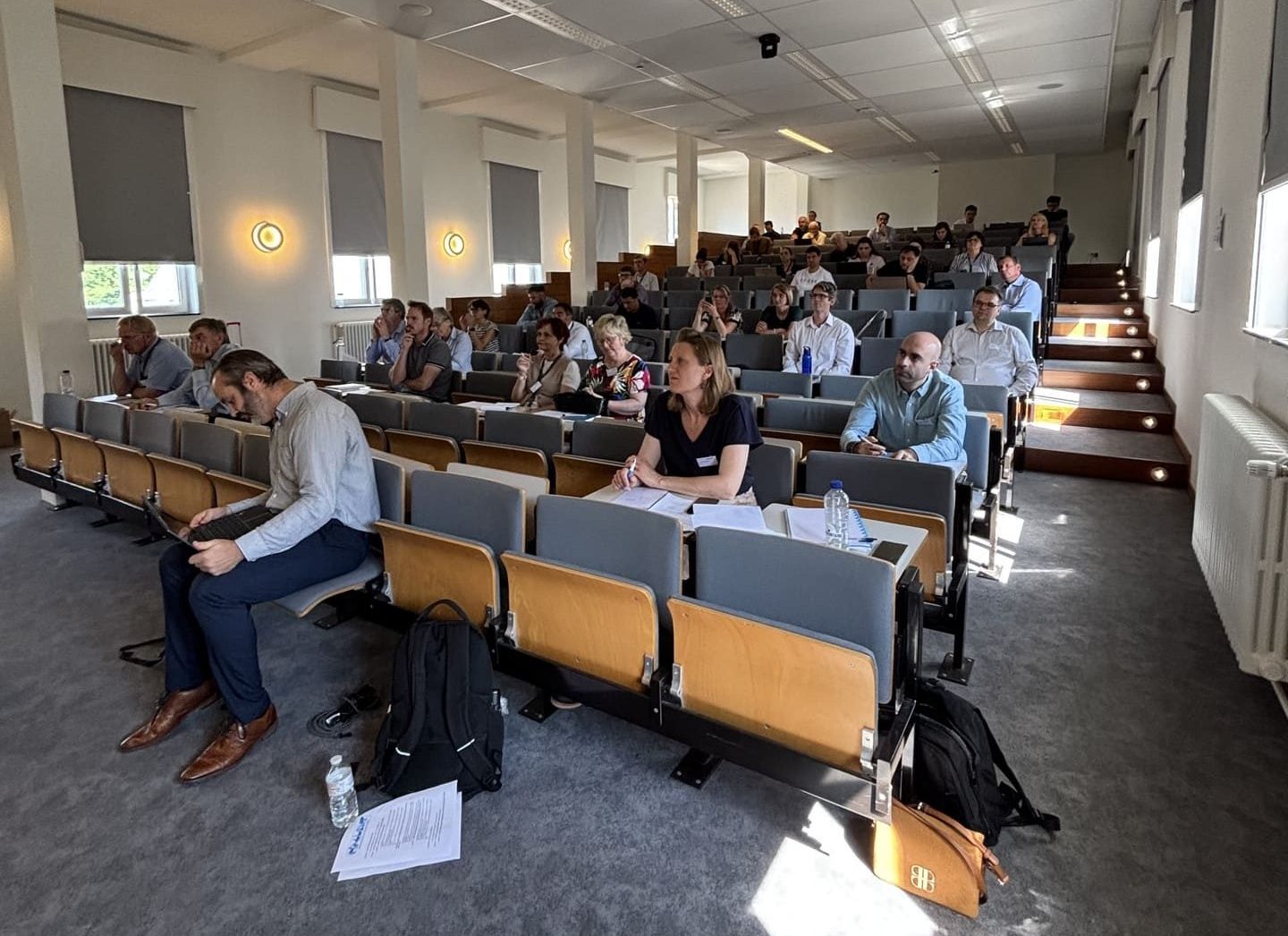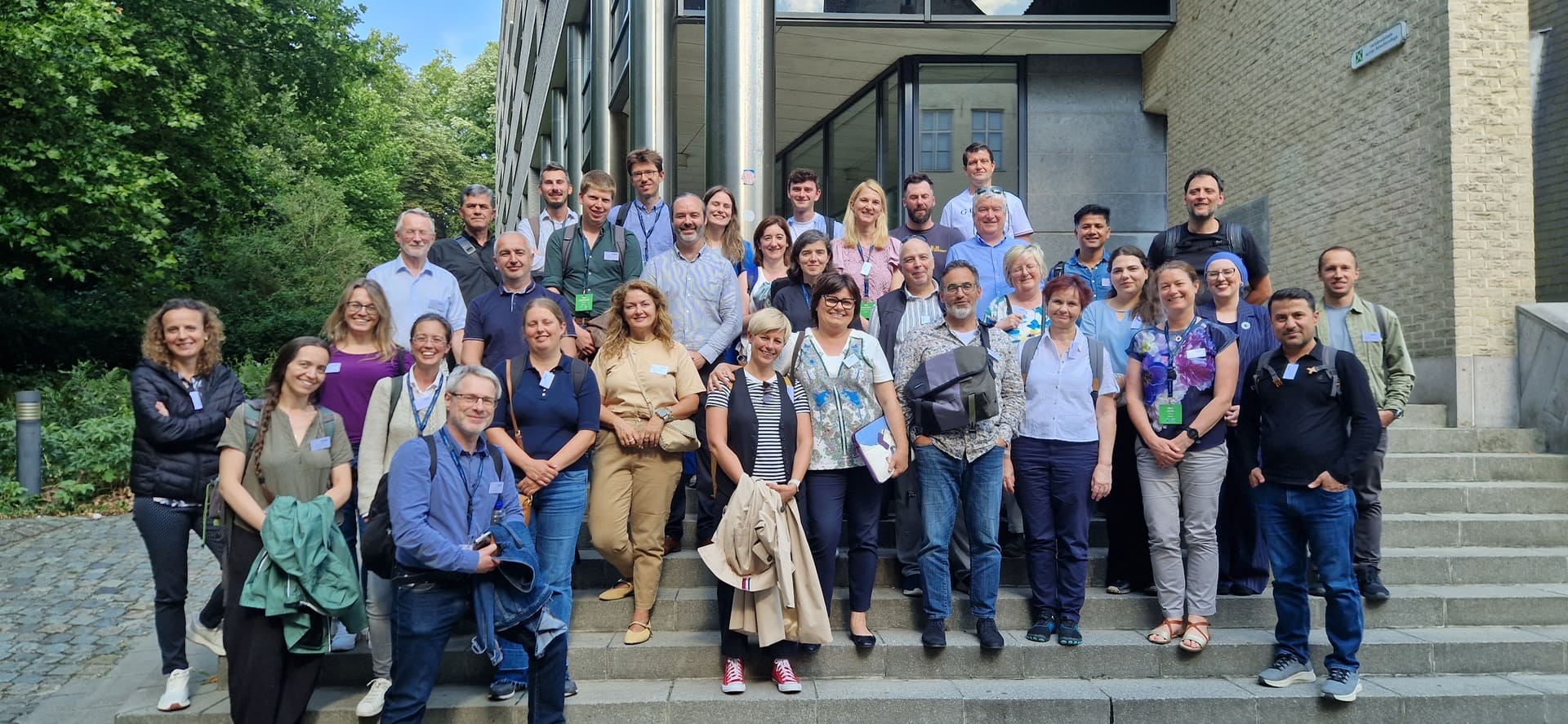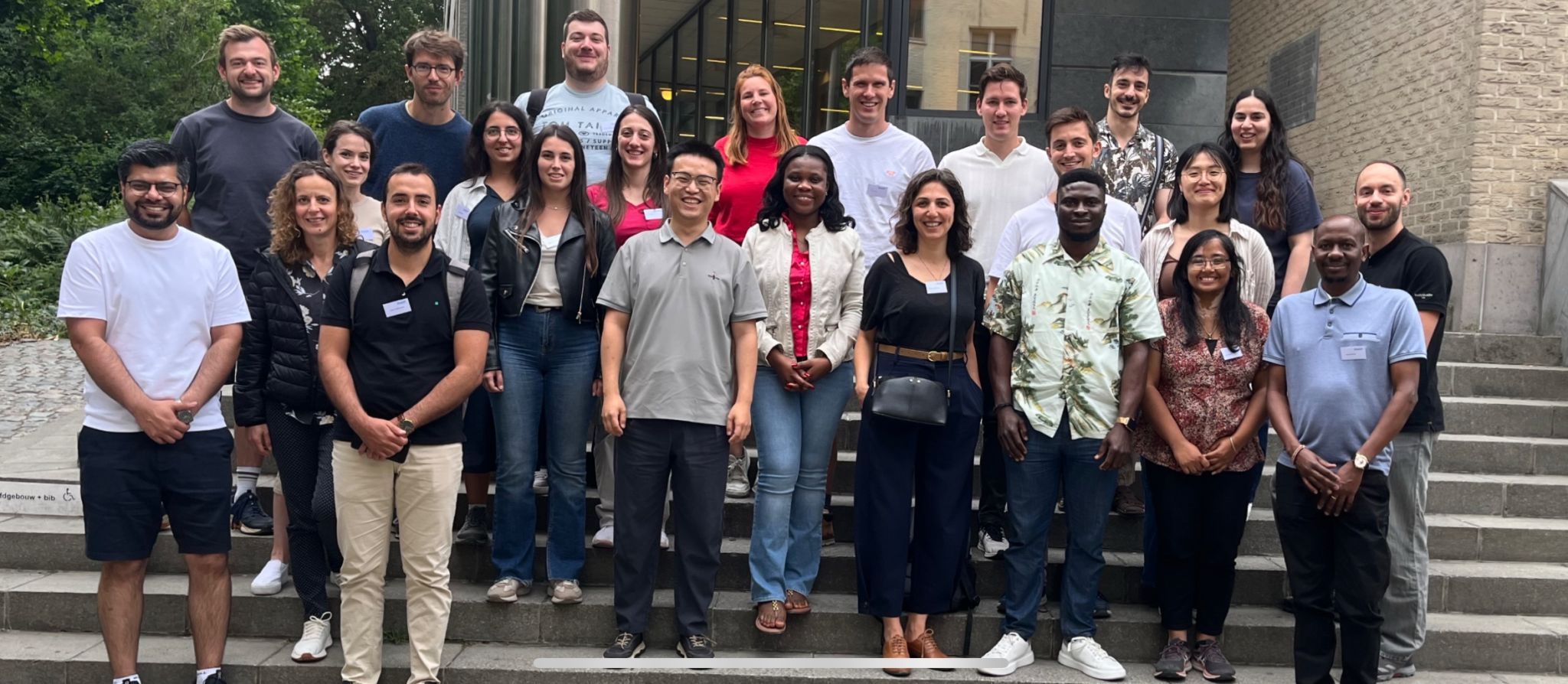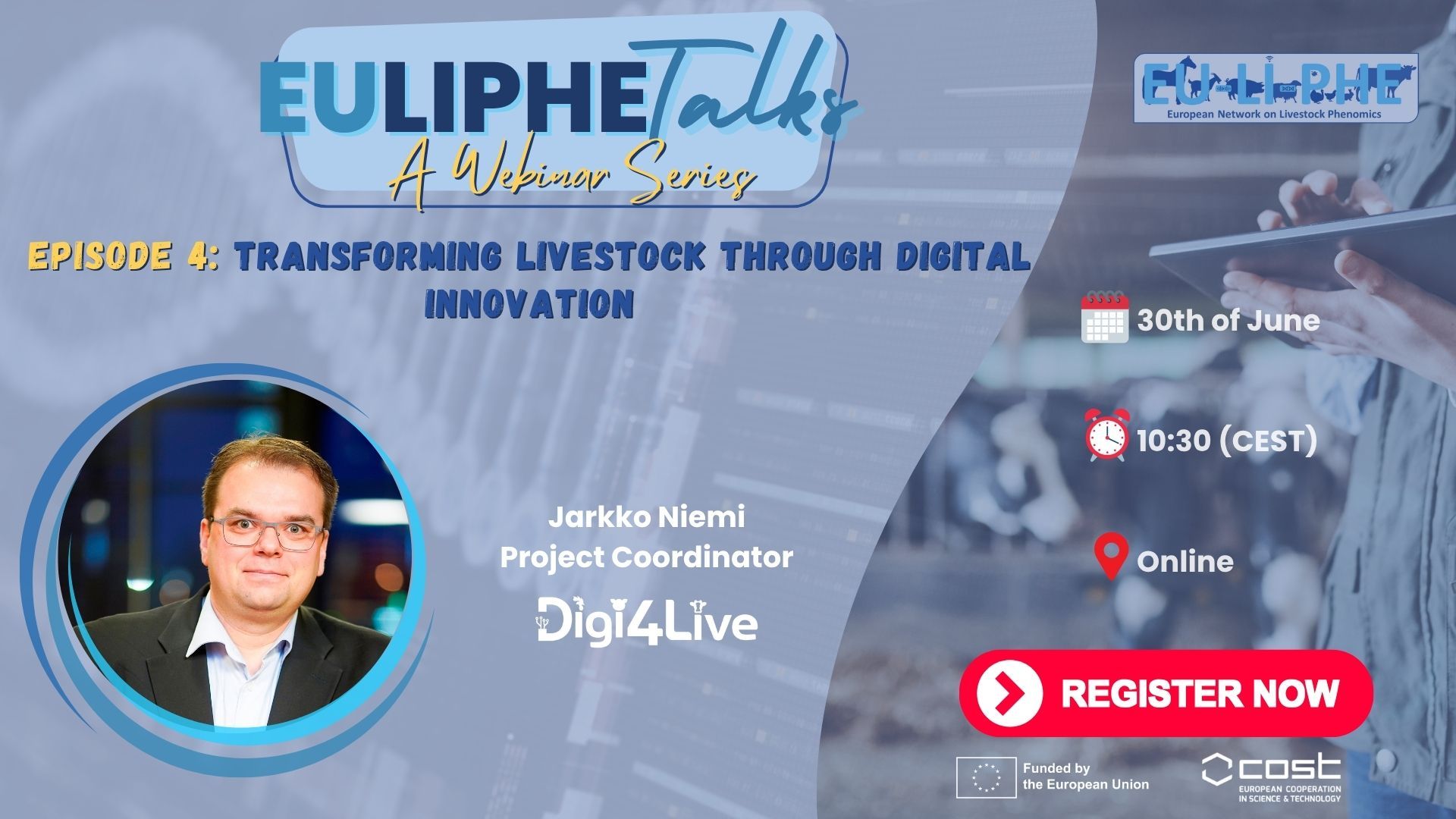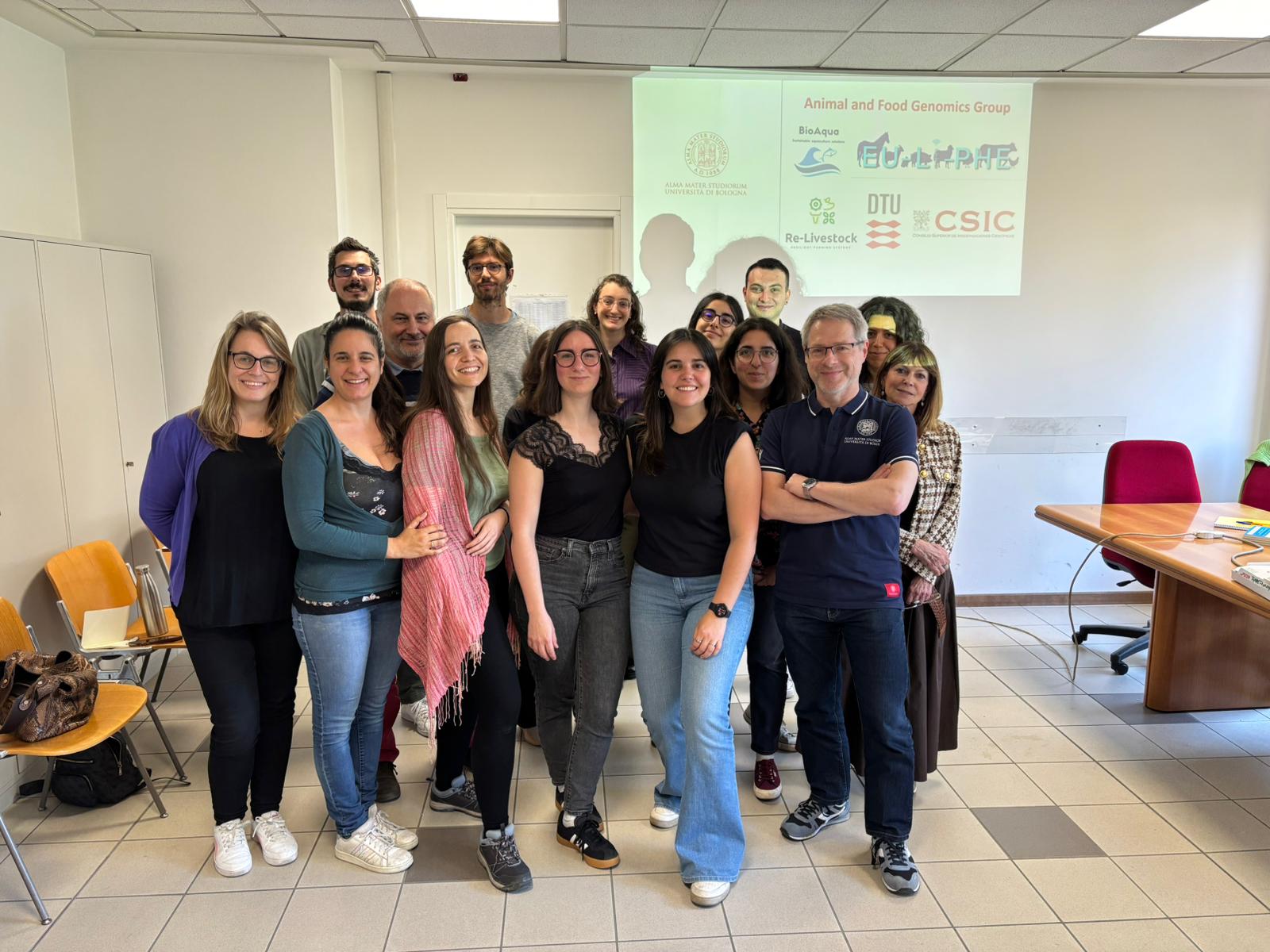11 July 2025 | KU Leuven, Belgium
The EU-LI-PHE Midterm Stakeholder Meeting, held in a hybrid format at KU Leuven, brought together over 60 participants from across Europe to discuss the current state and future direction of livestock phenomics. The one-day event featured a series of targeted sessions, highlighting technologies, EU-funded projects, industry practices, and policy perspectives that are shaping the digital transformation of livestock farming.
The meeting opened with remarks from Prof. Luca Fontanesi (University of Bologna) and Prof. Tomas Norton (KU Leuven), the Chairs of EU-LI-PHE, who introduced the scope of EU-LI-PHE and outlined the agenda, emphasizing the importance of translating research into practical applications for animal breeding and precision livestock farming (PLF).
Session I: Mapping Phenotyping Technologies Across the EU
Jarissa Maselyne (ILVO) presented the results from the EU-LI-PHE Working Group 1 on phenotyping technologies, showcasing a growing dataset that currently includes 1009 records of traits, sensors, and project information from 48 individuals. The parallel mapping of phenotyping infrastructures across 33 countries (214 facilities) offers insights for collaboration, gap identification, and future standardization in livestock phenotyping.
Session II: EU Projects on PLF and Digital Phenomics
This session featured updates from three Horizon Europe projects. Jarkko Niemi introduced Digi4Live, a CSA project supporting digital solutions for phenotype tracking. The project addresses data harmonization and interoperability through case studies in animal health, welfare, resilience, and administration. Jarissa Maselyne presented the aWISH project, which develops large-scale automated welfare monitoring at slaughterhouses. Technologies were tested across six European facilities and culminated in a catalog and best-practice guidelines. Xabier Diaz de Otalora introduced Re-Livestock, which combines PLF with AI for multi-level data analysis in pig farming. The project involves 10 years of monthly production and climate data from 50 farms in Spain.
Luca Fontanesi moderated a discussion on collaboration opportunities between these projects and EU-LI-PHE, proposing that the initiative serves as a starting point for state-of-the-art analysis and data infrastructure sharing.
Session III: Industry Perspectives on PLF and Phenotyping
Erik Vranken showcased the Sound Talks system for pig production, which uses robust hardware and wireless communication for real-time monitoring of animal health. Patrick Pagani (COPA-COGECA) shared the end-user perspective, highlighting both the potential and risks of data sharing and AI use in agriculture. He emphasized the importance of data interoperability and usability for farmers.
Session IV: AI and Data Sharing in the EU
Halid Kayhan outlined the EU legislative frameworks impacting data ownership and exchange, including GDPR, the Data Act, and the Common European Agricultural Data Space (CEADS). He highlighted the tension between policy ambition and practical implementation. Anneleen De Visscher discussed ILVO’s Djuistconnect initiative and the CEADS project, which aim to build sustainable, ethical data ecosystems where farmers retain data ownership. Toine Roozen shared ICAR/Interbull’s experience with large-scale data collection and efforts to improve data interoperability within the livestock sector.
Session V: Policy and Societal Perspectives on AI in Agriculture
This session examined the socio-economic implications of AI in animal farming. Mark Ryan stressed the need for realistic expectations, stakeholder-inclusive ethical guidelines, and tailored science-policy strategies. Anne-Marie Neeteson focused on the poultry sector, drawing attention to the consequences of low-quality input data, cyber risks, and processing errors. Craig Lewis discussed digital phenotyping in pigs, including objective and subjective traits, and the use of the PIC platform for layered data analysis in industry-academic collaborations.
Session VI: Multidisciplinary and Multisectoral Collaborations
Mike Toscano and Teun van de Braak reflected on successful collaborations between academia and industry. They emphasized clear communication, mutual appreciation, and phased trust-building as key elements for long-term impact.
Session VII: Phenomics Across Research Fields
Daniel Berckmans compared real-time health monitoring in animals and humans, advocating for smart, individualized data over sheer data volume. Holger Russig presented innovations in rodent behavioral and metabolic phenotyping with implications for livestock monitoring systems.
Session VIII: National and International Phenotyping Initiatives
Luca Fontanesi and Zhihua Jiang introduced the EU-US whitepaper on animal phenomics, emphasizing its impact on community development, data-driven policy, and sustainable livestock production. Jean-Pierre Bidanel presented the LIPH4SAS project, a French national infrastructure that promotes open science, ethical standards, and data access. Supported by ESFRI and European Commission guidelines, the project aims to boost visibility, innovation, and stakeholder engagement in phenotyping.
The day concluded with reflections on the value of combining research, technology, and industry input to address current and future challenges, especially the importance of making data understandable and accessible to farmers, simplifying processes, and ensuring sustainability of project outcomes beyond funding cycles. This event proved to be a unique gathering of phenomics experts, researchers, industry leaders, and policymakers, united by a shared goal of advancing livestock phenotyping across Europe.
As a next step, EU-LI-PHE is preparing a stakeholder survey focused on public opinion and the impact of animal breeding and production practices. We encourage all interested parties to follow our channels for more exciting updates coming this fall.

